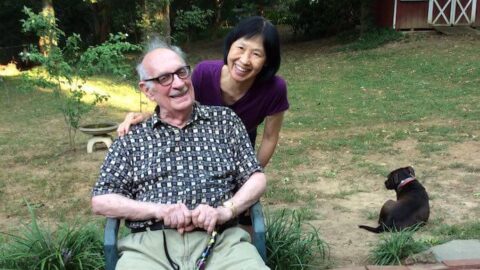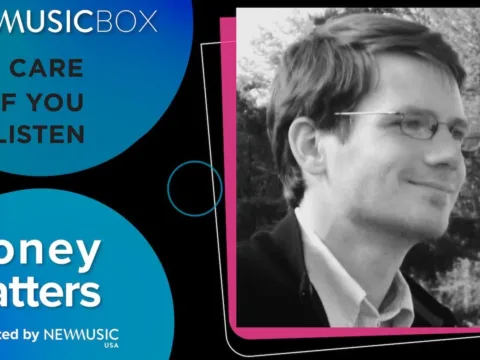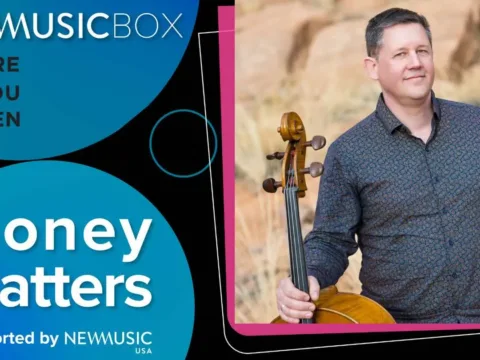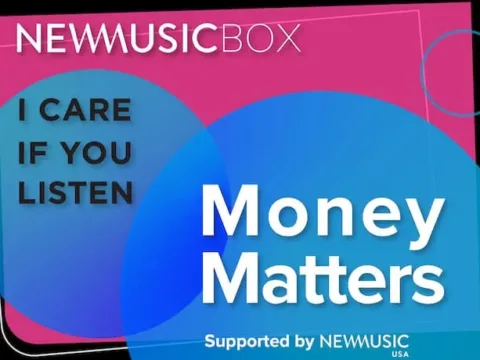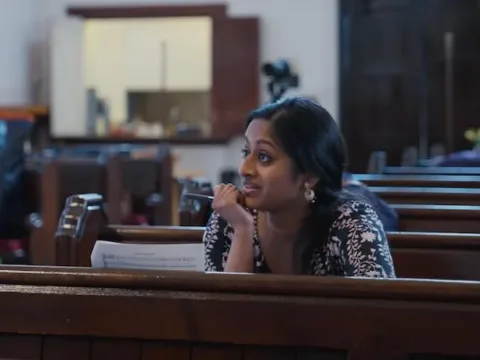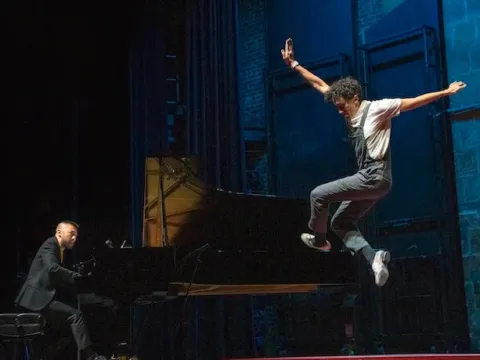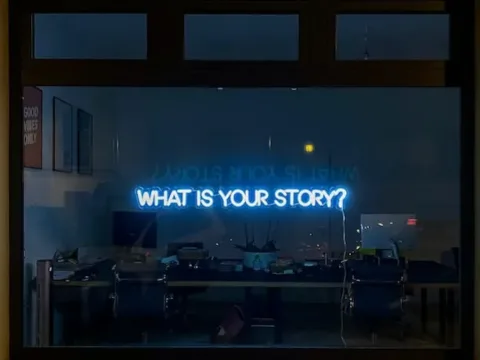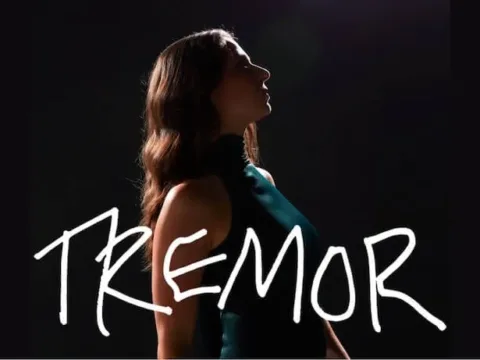One year ago, the remaining star in the 20th century’s firmament of indisputably sui generis composers was extinguished: George Crumb, the last of the “Three Cs” – Cowell, Cage, Crumb – pioneers of the avant-garde piano. He was also a remarkable friend and mentor whom I had the privilege of working with during his autumnal years.
Whenever I visited George Crumb and his family, I would say to my cousin-cum-dogsitter: “How often can you say you are going from a home with six dogs to one with seven dogs?” The Crumb family members are all passionate dog people, and this became one of the irresistible bonds between us.
I first got to know George around the turn of the millennium when he came to my Makrokosmos 70th birthday tribute for him at Merkin Concert Hall in New York. By the time his 75th birthday rolled around in 2004 (which I celebrated with another complete performance of Makrokosmos I and II, this time at Carnegie’s Zankel Hall), the Crumbs had accepted me into their household where I had the privilege of spending all the major holidays of the year. These occasions remain among my happiest memories.
Margaret Leng Tan performs “The Magic Circle of Infinity” and “Twin Suns” from George Crumb’s Makrokosmos I and II
They were idyllic times where we talked about dogs as much as we did music. Often the kitchen was a hive of activity where George’s wife Liz, their children Ann and Peter, and I would gather and carry on uninhibitedly animated conversations. George’s concentration was impressive. He would blithely continue composing, unfazed and oblivious to the commotion, deep in his otherworldly universe. After retiring in 1997 from over 30 years of teaching at the University of Pennsylvania, George lived in a contented bubble. After a productive morning’s work, he would join us in the kitchen exclaiming, “Happy dogs, happy days!”
When visiting the Crumbs, I preferred sleeping on the family room sofa where I could watch late-night movies. And then I would drift off, lulled by the chimes of the grandfather clock. Best of all, George would start work at 5 a.m. in his converted-garage workroom. Faint tantalizing fragments of melody would seep into my slumber – mysterious and microtonal since George seldom tuned his Steinway.
One day in 2012, which was the John Cage centenary year, I happened to mention to George that, for me, his Makrokosmos series and Cage’s Sonatas and Interludes were the pinnacles of 20th-century avant-garde piano writing. George let that sink in and then responded with, “Hmmm, maybe I should write another piano cycle.”
I was visiting on July 4, 2015 when George casually dropped his bombshell: “Margaret, I’m about ready to write a new piano cycle which I am calling Metamorphoses, and the first volume will be for you.” George then proceeded to pull out several art books to show me the various works he had chosen to interpret in his “Ten fantasy-pieces after celebrated paintings.” Forty years had elapsed since his Makrokosmos series of the 1970s. This was a historic occasion indeed!

And so began the step-by-step creation of a composition that unfolded over the next 18 months. I was extremely gratified that George tailored the work to my particular idiosyncrasies: the inclusion of the toy piano and small percussion (mostly toy), using my voice in unusual ways – most strikingly, learning to caw from the many crows frequenting the Crumb backyard, apropos of Van Gogh’s Wheatfield With Crows. Unlike Makrokosmos, where George delivered each completed volume to its dedicatee, George gave me each individual Metamorphoses movement when it was ready. I would work on the latest piece, travel to his home in Media, play it, and receive the next installment. Ever modest, George would invariably say, “Let me know if this is garbage. These days it is getting harder and harder to write – maybe I’ve said it all.”
Our work sessions were exhilarating and fun. I loved seeing George’s excitement on hearing his music for the first time. I will always remember his delight when I played him the opening piece of the collection: his interpretation of Paul Klee’s Black Prince. He exclaimed, “I’ve written a good piece – Liz, come and hear this!”
George was always open to suggestions. These were usually details that surfaced from a performer’s perspective and very often he would incorporate them into the score. Early on, I gave George a detailed diagram of the concert Steinway interior to remind him exactly where the crossbeams intersected the strings. This was to prevent any inadvertent strums across strings separated by a beam, absent in his studio piano. It always amazed me that this logistical problem never arose in the Makrokosmos pieces that George composed without access to a Steinway concert grand. George attributed this fortuitous happenstance to pure luck!

George’s music has always posed unconventional challenges for the performer and is, at times, punishingly demanding. He asks that the pianist possess not only highly proficient keyboard skills but also be somewhat of a jack-of-all-trades – harpist, percussionist, vocalist, even an actor and athlete!
To accommodate his novel inside-piano techniques George had to invent his own vocabulary of notational symbols. These are an inherent feature of his beautifully-wrought calligraphic scores, which are truly a visual delight. He reminded me of a medieval scribe painstakingly lettering every note, even drawing his own staves. George was inherently a poet as well; his scores include colorful verbal instructions next to the tempo indication at the top of each piece. These bon mots are a veritable treasure trove for interpretive insights e.g. “Eerily, with a sense of malignant evil” or “Slowly, plaintively (like a broken idyll).”
One night I was practicing in George’s studio. Around 1 a.m., I found George (who was usually in bed by 8 p.m.) at the kitchen table jotting something down on an insurance flyer. He had come up with a toy piano melody for Chagall’s Clowns at Night and thought it was worth noting, lest it was gone by the morning. Clowns’ somber mood is symptomatic of the foreboding that permeates much of Metamorphoses, Book I; Wheatfield with Crows (van Gogh) is ominously disquieting, while Perilous Night (Johns) and The Blue Rider (Kandinsky) are driven by a breathless urgency. Dalí’s The Persistence of Memory, however, is translated into an elegiac ode to his youthful days growing up in Appalachia.
Margaret Leng Tan performs “The Blue Rider” from George Crumb’s Metamorphoses, Book I
In February 2017, I was contacted by Chuang Xu, a young Chinese student who had chosen me to be the subject of his masters thesis in documentary filmmaking at the School of Visual Arts in New York. His timing could not have been more perfect. My response was, ”Do you want to be in on something historic? Then come with me to Media whenever I visit George Crumb this spring.” Chuang was thrilled to comply; all in all, Chuang and his school colleague Ziyu Tang captured over 16 hours of our Metamorphoses sessions. This footage now resides with the George Crumb Papers at the Library of Congress.
Chuang fulfilled his masters requirements with his documentary, Twinkle Dammit!, which follows the making of Metamorphoses Book I, culminating in its May 7, 2017 premiere at the National Gallery of Art with George in attendance. The Washington Post hailed Metamorphoses as “a striking new work from a composer who, at 87, shows no sign of slowing down.” Twinkle Dammit! went on to win several awards at international film festivals. My words to Chuang at the end of the film have since come back to haunt me: “In fifty years from now, you will be my age. I will be dead and gone, and George will be even longer dead and gone. You will drink a toast to us and think back on what a special time in your life this was.”
October 23, 2019 was the eve of George’s 90th birthday. I was in Singapore for the Asian premiere of Metamorphoses when I learned that Ann Crumb was very ill. I was fortunate to get back in time to say goodbye before she tragically succumbed to cancer. Ann’s death was a cruel blow that George never really recovered from. Then in March 2020, the pandemic brought the world to a juddering halt. George and Liz were essentially relegated to solitary confinement for the next two years.
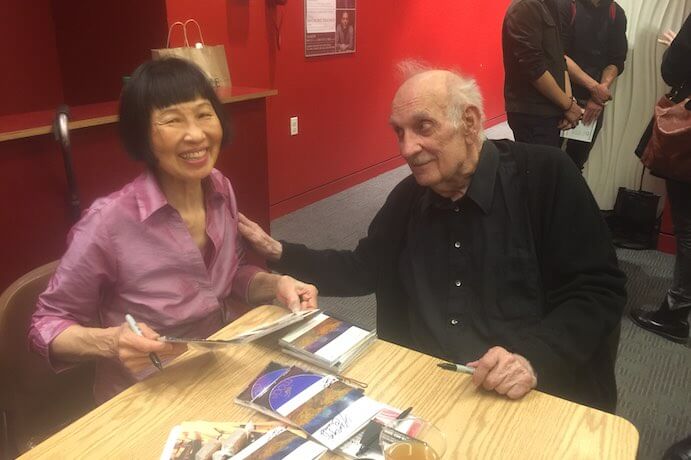
It was not until July 4, 2021 that I was able to visit George again. George was still mobile, but frailer than he was at Ann’s memorial 18 months prior. On the last day of my visit, George presented me with the score of Metamorphoses, Book II, which is dedicated to the pianist Marcantonio Barone. George’s parting words to me were, “I hope to hear you play this very soon, Margaret, and hopefully you will record it, too.” What a gift and on the sixth anniversary of Book I!
George never got to hear me play Book II. The following week he suffered a stroke that affected his ability to read and to express himself fluently. The last time I saw him was in September 2021, during a lull in Covid’s relentless mutations.
George died peacefully at home on February 6, 2022 at the age of 92 with his beloved pitbull-mastiff Zeus keeping vigil, as he had done with Ann. Elizabeth Crumb followed her husband three months later. They are buried in the cemetery near their home of over 50 years.
As I worked on Metamorphoses, Book II in the months following George’s death, I could feel his presence coursing through the music. Like Book I, it is by-and-large a dark work. His eerie setting of Gauguin’s Spirit of the Dead Watching is weighted with premonition, but van Gogh’s Starry Night, the closing chapter of George’s final composition, is luminous and transcendent. Near the end, there is a sublime moment where rising fourths alternate with a ghostly “wind music.” It is as though George himself is ascending into his infinite cosmos, guided by the wordless whisperings of angels.

I CARE IF YOU LISTEN is an editorially-independent program of the American Composers Forum, and is made possible thanks to generous donor and institutional support. Opinions expressed are solely those of the author and may not represent the views of ICIYL or ACF.
You can support the work of ICIYL with a tax-deductible gift to ACF. For more on ACF, visit the “At ACF” section or composersforum.org.
